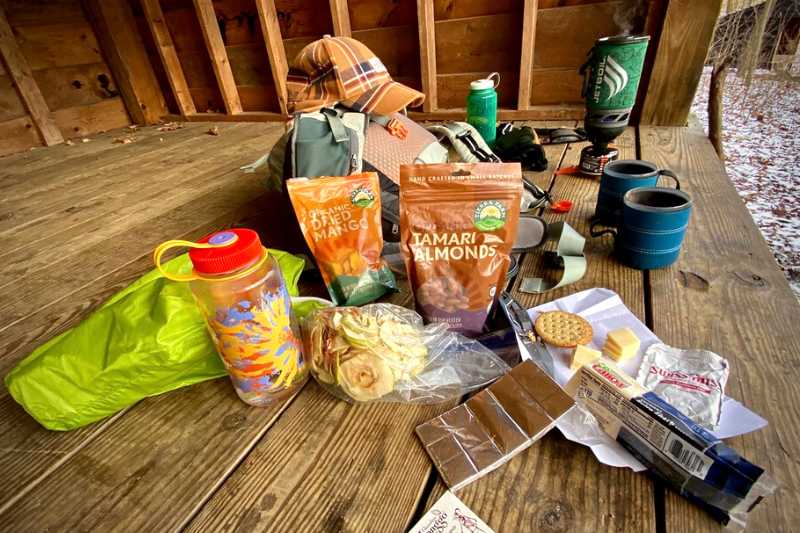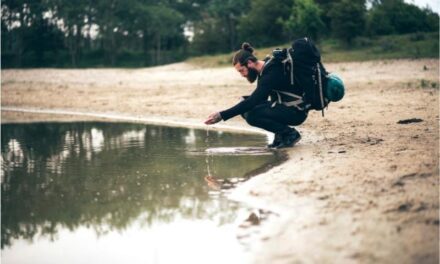The key to making any outdoor excursion enjoyable is to be prepared before you head outside.
In our last article, we shared how to best dress for your next great outdoor adventure. Today, we’re sharing how to pack for your next trip in the wide outdoors.
Here are the 10 Essentials You Should Have on Nearly Every Outdoor Excursion.
Preparedness can be the difference between a wonderful winter hike or a miserable experience. It can mean the difference between life and death if your outdoor adventure goes awry.
Ensure that you are prepared for whatever comes by packing these 10 essential items in your daypack:
- Headlamp: One or two of these, plus spare batteries.
- Navigation: Physical map of the area you are exploring, and a compass. While using your phone for directions using AllTrails or other apps is very helpful, you shouldn’t rely solely on it. Your battery may drain quickly in cold weather, leaving you with no map or idea of your location and how to return to your starting point. Carrying a rechargeable phone battery is always a recommended item to have in your bag.
- Fire Source: Waterproof matches, lighter, and outdoor portable fire igniter. It is always better to have two sources than one in the event that one may not work due to excess moisture.
- Water: Carry 2-3 liters in a wide-mouth Nalgene bottle or insulated wide-mouth bottle depending on your outdoor activity’s length and activity level.
- You can bring a mini lightweight outdoor water filtration system such as Sawyer’s, Grayl, or another brand to help you gather more potable water should you run out. Water can freeze quickly, however, in freezing temperatures, so a water filtration system may not be helpful if the water sources are frozen.
- To prevent your water from freezing, you can create a wool or fleece insulator covering to place around your bottle. Ensure the lid is tight, then pack your water bottle upside down in your bag since water freezes from the top.
- Knife/Multi-Tool: The knife/multi-tool is vital as you never know when you may need to use it for first-aid, gear repair, or for cutting.
- Food: Carry a variety of food options and more than you need. You never know what circumstances may require you to need it. Consider snacks like protein bars, fruit, nuts, cheese, sardines, crackers, peanut butter-banana tortilla roll-ups, soppressata or pepperoni rolls, and pickles.
- Extra Clothing: One or two pairs of merino wool socks, sock liners, an extra moisture-wicking base layer, bandana, neck gaiter, and gloves or mittens. These are all essential if you are out longer than anticipated and are cold from sweat.
- First Aid Kit: Familiarize yourself with the items in this kit before your adventure. Make sure your first aid kit is fully stocked in the event of an emergency. There are several types of first aid kits with variable pricing depending on the kind of adventure you are pursuing.
- Shelter: An emergency blanket should be a part of your essential items, as it helps with hypothermia should the weather become inclement. An emergency blanket can also provide protection from the elements if needed.
- Sun Protection: Sunscreen is a must, even on a cloudy day. The sun’s rays can come through the clouds causing your skin to burn. Sunscreen also helps to keep your skin moisturized during dry cold weather and helps with windburn. Don’t forget sunglasses and lip balm too!
While the following list is not required, it is highly encouraged that you consider bringing the following:
- A set of binoculars or a monocular help you view wildlife up close without disturbing them.
- Trekking poles help take weight off your knees while hiking. They also assist with stability and balance over hills, rocks, and uneven terrain.
- YakTrax or crampons are helpful if you are hiking on uneven terrain with packed snow and icy conditions. They are invaluable and help you grip terrain while ascending/descending a hill or walking on level trails.
- A small bag for any garbage collected on the trail.
- Journal and pen for notes.
- A camera to capture beautiful scenery and wildlife.
- Portable battery pack and charging cord, or solar charger for charging electronic equipment.
- Bandana
- Whistle for sending distressed emergency situations.
There are many resources available to help make your outdoor activity an enjoyable experience.
Be prepared by checking out regional recreational outfitters, outdoor retail shops, and YouTube. Better yet, join an outdoor adventure group and get involved with an organization to help conserve, preserve, and protect our great natural resources. We promise you will receive so many joyful benefits in return!
Lastly, and most importantly, always leave a message or note with your loved one or neighbor to let them know where you are going. They should know the trailhead or route you plan to hike and your approximate return time.
Have fun out there!

Written by Yvonne Dwyer
Master Naturalist and OPL Content Contributor
“It is truly an honor for me to be a contributor to One Planet Life. By sharing my experiences and lifetime of learning, I hope to inspire conservation, sustainability, stewardship, and awareness of enjoying the natural wonders of the world for the wellbeing of people and the planet.”










